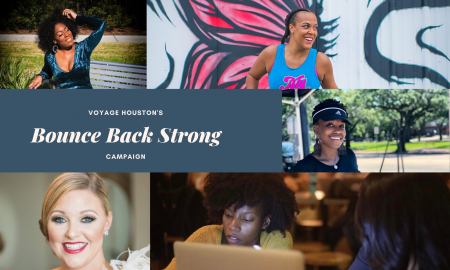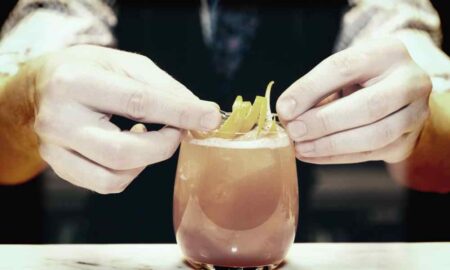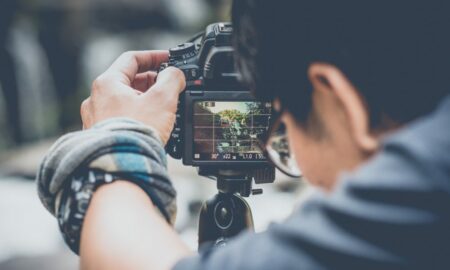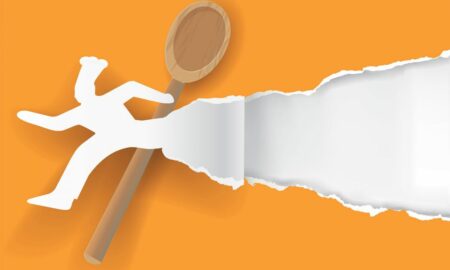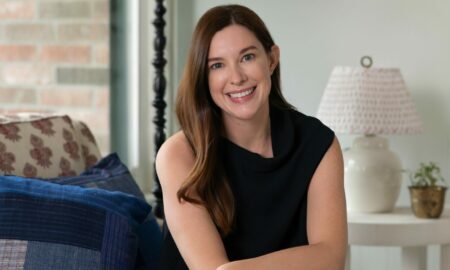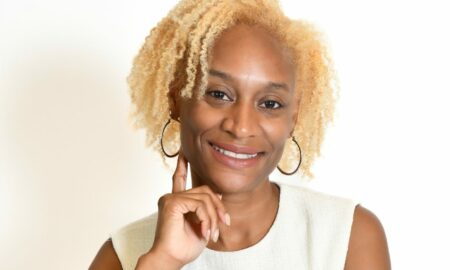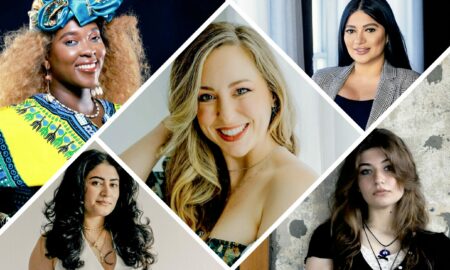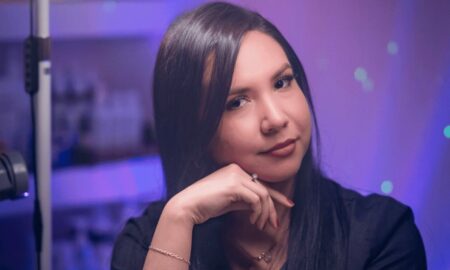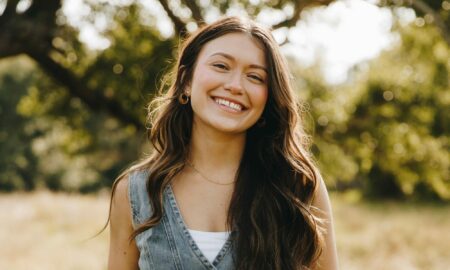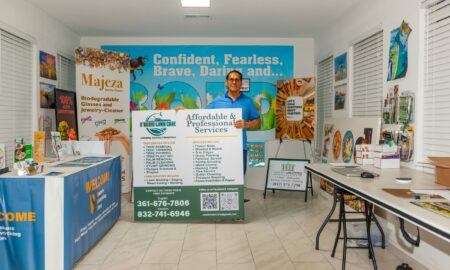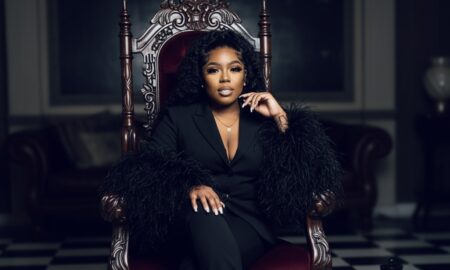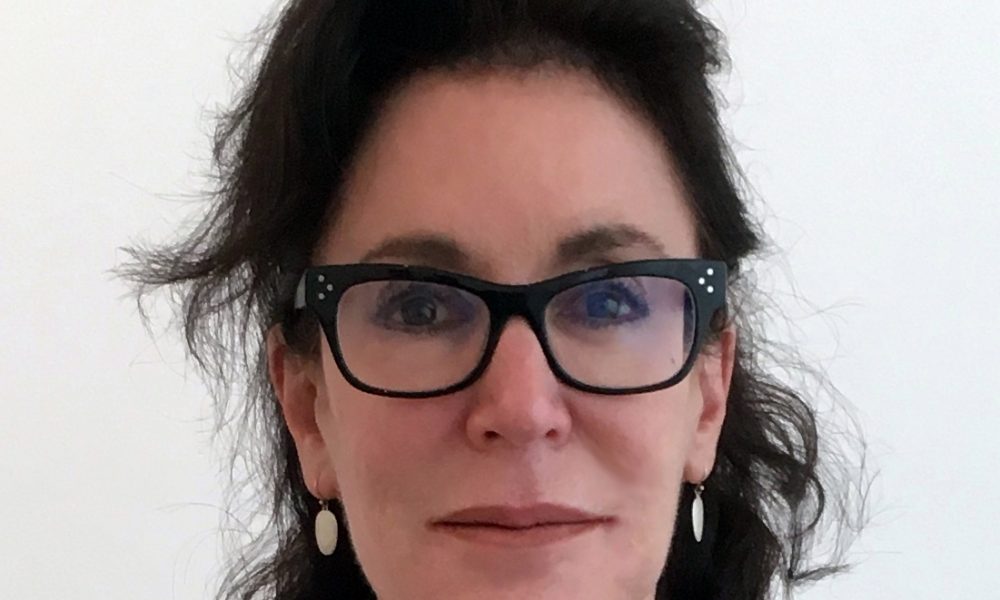
Today we’d like to introduce you to Patti Oleon.
Patti, we’d love to hear your story and how you got to where you are today both personally and as an artist.
I grew up in the outskirts of Brentwood, in a far-flung western region of Los Angeles – in a series of stuccoed apartment buildings with a depressed mother and a traveling salesman father who was never home.
But, I was very much loved and encouraged, particularly by my mother to be an artist. I found the perpetually sunny weather desolate, and I always longed for rain. Despite the weather, or perhaps because of it and the unending smog, I started painting at the age of eight, pushed on by a series of home spun art teachers who took my brush in hand and basically did the work themselves. Still life’s, artfully arranged bananas, and apples strewn deftly across a sea of wrinkled cloth, was the norm. But I persevered, and knew always that painting and drawing was for me.
I attended UCLA for both undergrad and graduate school. I majored in Fine Arts Painting and minored in Psychology and German. While I was there I received a number of scholarships and awards, including a Ford Foundation Travel Grant. I used the funds from this grant to take a trip through central Mexico and Guatemala. Being raised on painting still lives formed a natural bridge to how I approached painting, and I had developed series of paintings based on tableaus I created of seemingly disconnected objects across a picture plane, instigating a disjunctive narrative. The paintings were small in scale, exactingly detailed, in a shallow field, viewed from above as if they were an axonometric. The trip through Mexico and Guatemala afforded me the opportunity to collect bizarre specimens of a disjointed culture: iconic mass-produced Catholic statuettes, etc., juxtaposed with stuffed shellacked toads playing at miniature pool tables. There were endless examples of this collision of culture of the extreme Catholicism married with paganism of the indigenous peoples. It was also my first immersion into a culture foreign to my own. The discrepancies fascinated me, and when I returned home with a multitude of specimens, I made series of still life’s using them and furthering my ideas of how far the idea of still life could venture, suggesting dialogue and intrigue. I was always interested in the ideas generated by the interplay of things with the coupling of light that seems to animate and transform the commonplace. It was part of a process of free-association, in which one could choose, or not, to imply meaning by juxtaposition. I graduated with my BA in 1975, Summa Cum Laude and Phi Beta Kappa and my MFA in 1978. My work was included in several gallery shows.
After graduate school, I taught drawing and painting at UCLA Extension. I spent months on very small-scale paintings, exactingly, obsessively detailed, the subjects of which were made up of discarded anonymous photos (from the trash bin of local Fotomat drive thrus) full of spunky, misshapen families ensconced in front of fake brick fireplaces in their homes, adjacent to strange fruit, satin fabrics and transparent objects casting other worldly shadows across the picture plane. These paintings became the foundation for my more mature work, which are equally concerned with the mystifying quality of light and the relationships between things.
In 1979, I was awarded a Fulbright grant to study in Germany. The foundation for my thesis was the idea of “horror vacui” that is characteristic of Germanic and Netherlandish medieval and early Renaissance painting: intensely and precisely detailed paintings with almost no negative space – essentially a fear of empty space – objects within spaces constructed without linear perspective which transformed even the most mundane objects into something otherworldly and magical. This also aptly described my work.
I lived in Munich with a German artist. It was dark, gloomy and wonderful, rich in history and discussion and discourse. I continued painting small scale paintings in the one room flat we shared, with the rain coming through little broken points in the ceiling and dripping slowly and tortuously into little containers situated through the room. I painted juxtapositions of odd black and white photographs of pre WWII Germany and bits and pieces of contemporary Germanic stuff. I listened to American Armed forces radio. Ronald Reagan was elected President while I was living in that room and the German news was full of cowboy references. Patterns on wallpaper, textures on walls, cigarette smoke everywhere and the pervasive, guttural aspect of the language and food all played a big role in my work.
The grant also afforded me opportunities to visit museums and castles, not only in Munich and throughout Germany, but also in many major cities in Western Europe. I lived in both Munich and London for a year and a half.
Upon moving back to LA, I exhibited and continued painting and began to sell my work to collectors. I then moved to Berne, Switzerland with my soon-to-be husband, and then back to London, totaling about two years. I started working on a larger scale and on canvas as opposed to hardwood panels. We moved to New York in fall of 1983, to a raw loft, a burned-out shell that we reconstructed, and I had a real studio for the first time, a large room to myself. I began to paint on a much larger scale, primarily because the still life had begun to be limiting for me. I began to use photographs I took myself as opposed to found ones, and had found new subject matter in the form of museum displays. I made a break with my previous work and began to paint from photographs I took using a disjunctive film. I photographed display cases in the Metropolitan Museum of Art using Kodachrome 64 film (now obsolete), which, since it was intended for use in daylight, dramatically altered the appearance of things, space, and light when used in artificial light. The resulting photographs were dramatic, strange, compressed spaces, like warm tableaus, much like the still lives I had been painting from. This process freed me up to make all kinds of pictorial choices I had hindered myself from doing when working from life: I combined elements from different pictures, shifted perspectives, mirrored objects and created strangely populated paintings from a makeup of preciously honed, handmade objects and popular, mass reproduced images.
I created paintings using the imagery derived from the photographs I had taken of displays in museums in Europe and New York. At one point while beginning a new painting, I happened upon an image I had taken in one of the period rooms at the Metropolitan Museum; this photograph was just of the room itself, not containing any displays/artifacts. It was an intriguing image to me, with the strange isolated artificial quality of the light, and I painted it. From this point on, my paintings became about the spaces, the environments that housed the artifacts, not the objects themselves: they became interiors with all that this name implies: an internal space, both real and imagined, projected and fashioned, artificial and actual. This constitutes the basis of the work I have been doing for the past two decades, working from reproductions of real places, artificially constructed rooms, contrived to look habitable, but without any human presence.
I exhibited in several group shows, received an Ingram Merrill Foundation Grant, which allowed me to paint full time for the next year. Then I had my first one-person show in Los Angeles and shortly after, gave birth to our first child. This obviously changed my life dramatically. Painting full time became impossible, but I continued to paint whenever possible. I had a second son a year and a half later, and shortly afterwards we moved back to Los Angeles, where I had family to help with my children. I worked full time as a “ghost painter” for a commercial artist to help support us, and continued to paint, and began to show my work more. A few years later, we moved to San Francisco, and from this point on, despite having to look after two sons, I began to paint and show my work, and to be represented by galleries.
At some point I taught myself Photoshop, and this significantly changed the way I approached making my paintings. Prior to this, I had used the photographs I had taken, which had been carefully composed and constructed, isolating sections for use in my paintings. With Photoshop, I now began to digitally alter the photographs, creating overlapping layers where I changed the light, density, color, at time mirroring images. In the end, I create a composite photograph which then becomes the blueprint for my paintings. The finished paintings invoke a dreamy, sort of hallucinogenic reality accomplished with a precise realism that references the past but is a fictitious, fabricated, enigmatic reality rooted in the present.
The paintings are an amalgam of contradictions, blurring the line between the real and the artificial, the dark and the light, and the banal and the transcendent. I use traditional Old Master oil painting techniques to create paintings that reference the past yet are firmly rooted in the present. Despite their seeming realism, the works are clearly the result of seeing through both an actual and a metaphorical lens.
We’d love to hear more about your art. What do you do you do and why and what do you hope others will take away from your work?
The subject matter for my work is derived from photographs I have taken in public places set up to appear habitable but lacking human presence. These include hotel lobbies and museums, specifically the period rooms in which an entire chamber or suite of rooms has been transported from its original location and reconstituted in an otherwise disassociated place and time. In addition, I have photographed TV and movie sets because of the ambiguous reality they suggest. All these spaces have been arranged and organized with the intent of presenting a fictitious reality.
My work problematizes and investigates the layers and layering of artifice in these fabrications. I am especially fascinated with the intellectual consequences of decontextualizing not only things, but also places, coupled with the process of layering one thing with the appearance of another, and all that such illusion and disassociation-both geographical and temporal-implies. Period rooms, for example, translate and transform social environments, a process requiring an imaginative leap on the part of the viewer willing to succumb to the experience of the artifice. My work explores the chasm over which the imagination of the viewer leaps.
Working from reproductions – the re-producing (both by photographing and altering the photographs as well as the contrived nature of the reconstituted rooms/spaces), I emphasize their dense physicality and the quality of the artificial light, which is generally their sole illumination. My paintings render this light as it reveals some details while obscuring others, displacing location and time for the viewer. No longer what they once were, the rooms continue to signify their original intention; they are simultaneously real and unreal. Working with my photographs, I then digitally edit, enhance, alter, and sometimes double the images before translating/painting the composite digital image to the panel. The final paintings are an amalgam of contradictions, blurring the line between the real and the artificial, the dark and the light, and the banal and the transcendent. I use traditional Old Master oil painting techniques to create paintings that reference the past yet are firmly rooted in the present. Despite their seeming realism, the works are clearly the result of seeing through both an actual and a metaphorical lens. This is especially clear in the way that I treat light. The light refracts, blurs, and creates auras in a way that our eyes, with their auto focus, never do, but which is a common photographic conceit.
I create a composite image that becomes the ultimate source for my paintings by digitally layering the slightest of alternative views of the same space. Differing in color, hue, transparency, each new stratum retains its integrity while subtly altering the appearance of the amalgam and adding additional nuance. The phenomenon of layering is also of interest to me because it introduces the suggestion of a temporal element.
What I would like people to experience is a shift in their sense of what is a shared, complicit idea of reality. I want the viewer to feel like the pictorial place is familiar and even seductive, and then feel uneasy about what is or is not real. Because they are very realistically rendered, there is a disquiet about situating oneself.
The sterotype of a starving artist scares away many potentially talented artists from pursuing art – any advice or thoughts about how to deal with the financial concerns an aspiring artist might be concerned about?
It’s always a challenge for an artist (and writer, and musician, etc.) to be able to fully support themselves from their work alone. There are a number of grants to apply for, and resources on the web are readily available. They can just google “art grants”, etc. Of course, teaching is always an option, but that is also difficult and doesn’t usually pay enough to live on. Also, they can try putting their work on Instagram (by “following” other artists, their work gets seen as well, and using tags helps a lot). I’ve heard stories of artists selling their work through Instagram. And Facebook can help. And, getting gallery representation would be a huge asset. Meeting other artists exposes work also.
Do you have any events or exhibitions coming up? Where would one go to see more of your work? How can people support you and your artwork?
I am represented by several galleries: Edward Cella Art + Architecture in Culver City (Los Angeles); Modernism, Inc. in San Francisco, Cris Worley Fine Arts in Dallas and Imago Gallery in Palm Desert, CA. I would love people to buy my work! I am also available for commissions. There is a CV on my website.
Contact Info:
- Website: www.pattioleon.com
- Phone: 4155173640
- Email: patti.oleon@gmail.com
- Instagram: pattioleonstudio
- Facebook: patti oleon






 Image Credit:
Image Credit:
Patti Oleon
Getting in touch: VoyageHouston is built on recommendations from the community; it’s how we uncover hidden gems, so if you know someone who deserves recognition please let us know here.


